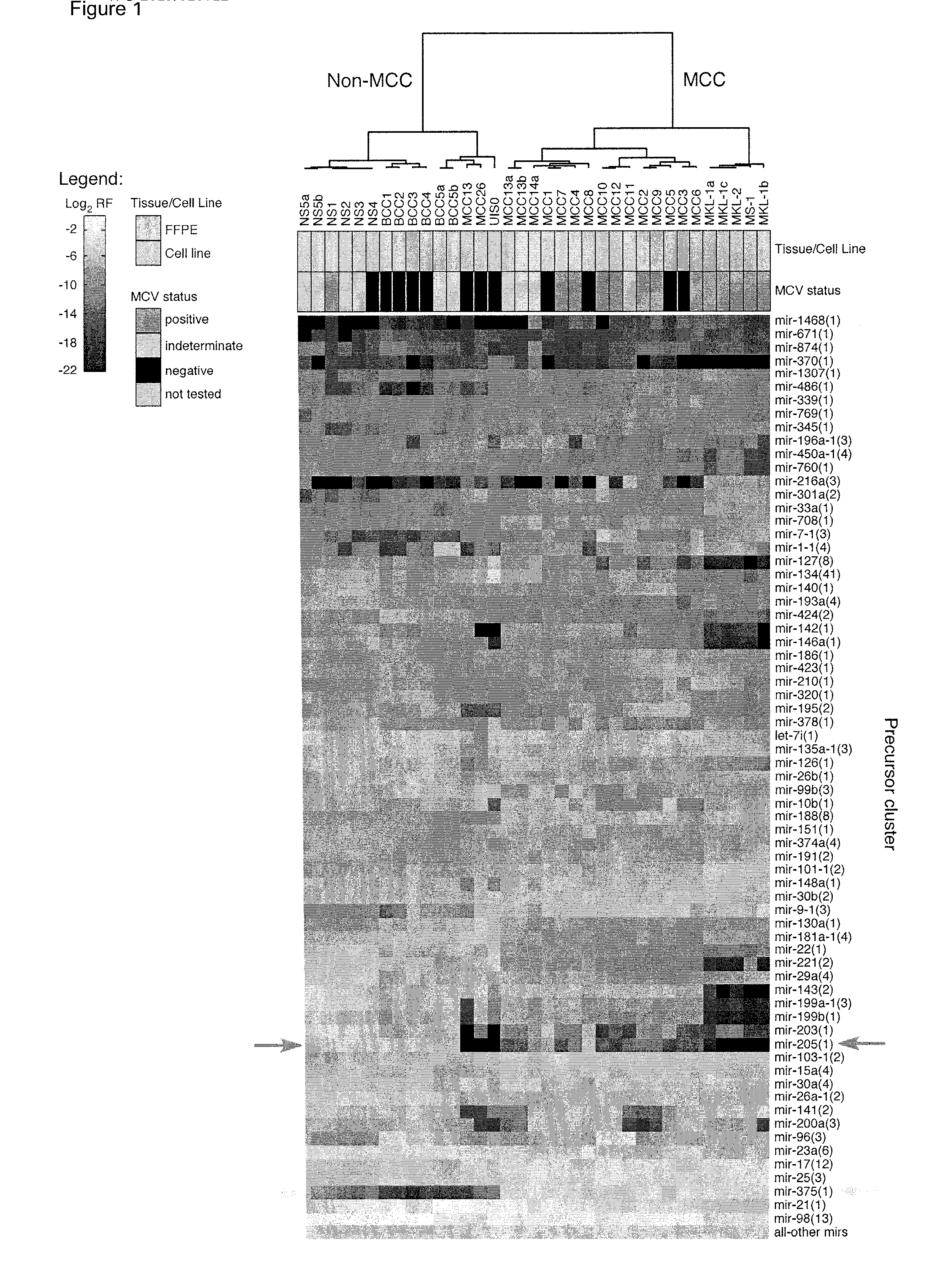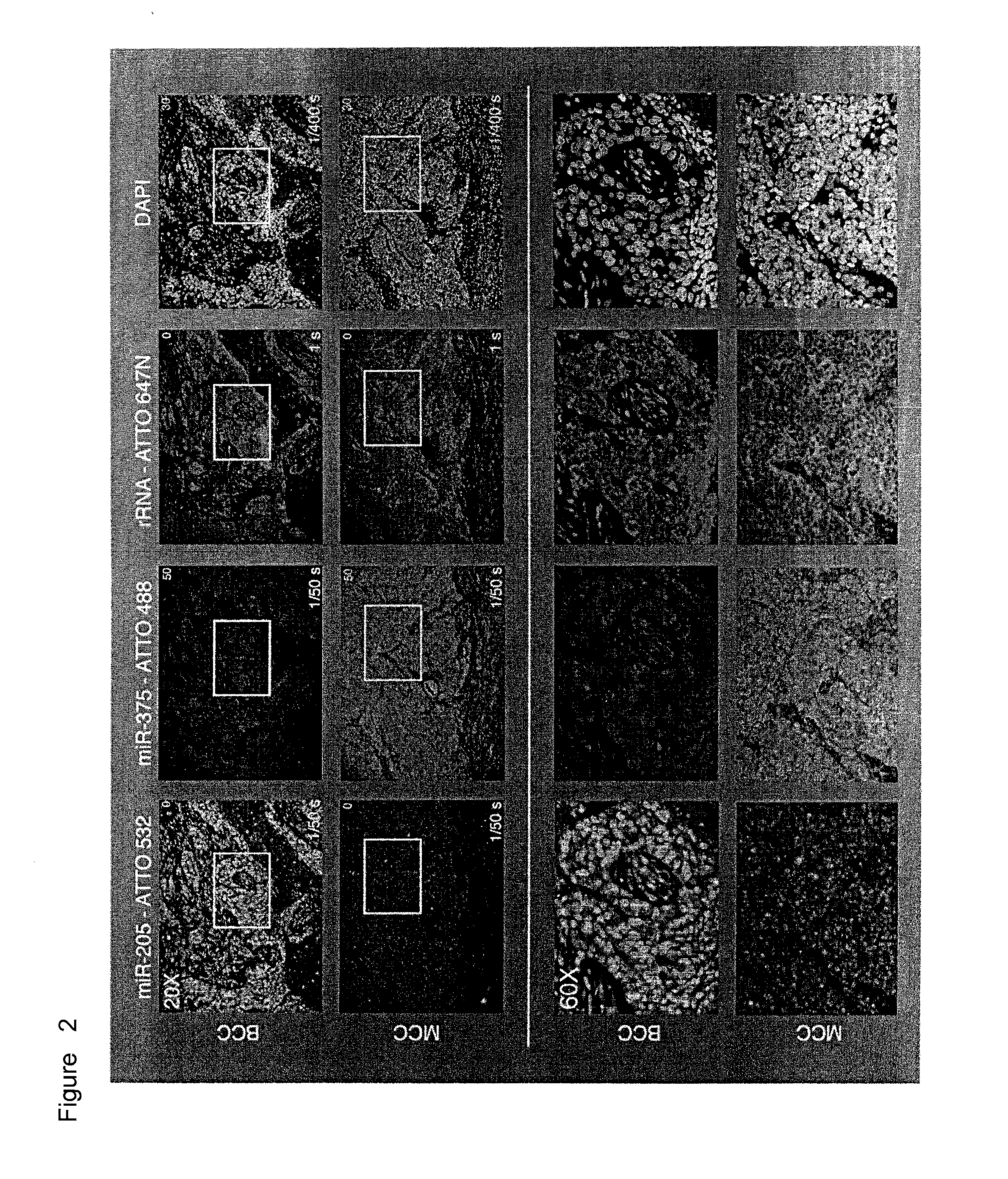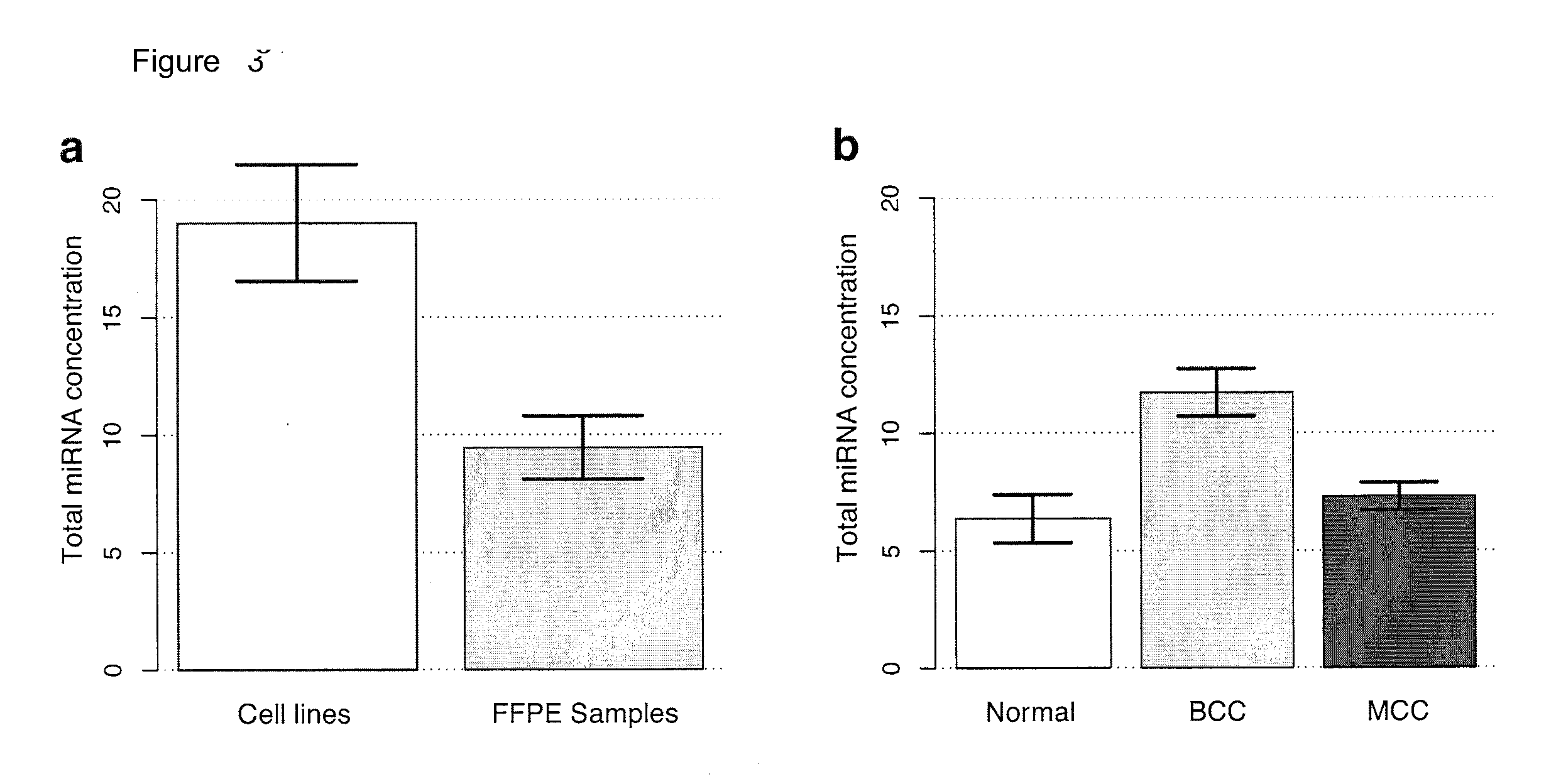Methods for fixing and detecting RNA
a technology of fixing and detecting rna, applied in the direction of microbiological testing/measurement, biochemistry apparatus and processes, screening process, etc., can solve the problem that current ish are not reliable for measuring small nucleic acids
- Summary
- Abstract
- Description
- Claims
- Application Information
AI Technical Summary
Benefits of technology
Problems solved by technology
Method used
Image
Examples
example 1
[0202]To assess miRNA expression differences between tumors, total RNA was extracted from 36 archived clinical materials and fresh cell lines from patients with Merkel cell carcinoma (MCC), basal cell carcinoma (BCC), and normal skin (NS) (FIG. 16).
[0203]We subsequently profiled and quantitated miRNAs in all samples using barcoded small RNA sequencing. Sequence reads were annotated by RNA category (FIG. 17). Total miRNA concentrations were calculated for all samples using sequence read and RNA input ratios and averaged 11.6 (range: 4.6-41.7) fmol / μg (FIG. 18). Higher total miRNA concentrations were seen in Trizol-extracted fresh cell lines (CL) compared to Masterpure- or RecoverAll-extracted FFPE samples (FIG. 4), consistent with reported differences arising from sample processing and / or RNA extraction method. To minimize these differences, we compared concentrations in RecoverAll-extracted FFPE samples from sequencing run one (hereafter termed the training set). Total miRNA concent...
example 2
[0217]miRNAs are valuable disease biomarkers because of their cell-type specificity and abundance. We developed barcoded small RNA sequencing for simultaneous miRNA profiling and quantitation in multiple samples. Through profiling and discriminant analysis, we identified a distinct, inverse relationship between miR-205 and miR-375 expression that differentiated two skin tumors with shared histologic features, namely basal cell carcinoma (BCC) and Merkel cell carcinoma (MCC).
[0218]We designed probes targeting these tumor-specific biomarkers and rRNA to establish multicolor miRNA fluorescence in situ hybridization (FISH) on formalin-fixed paraffin-embedded (FFPE) tissue sections. Amplified miRNA signals were corrected and normalized against directly detectable reference rRNA signals and tumor-specific cut-off values were established. We subsequently validated our method on 16 BCC and MCC tumors, correctly identifying all tumors in a blinded analysis. Parallel visualization of differen...
example 3
[0234]We demonstrate the use of specifically designed LNA-modified DNA (LNA / DNA) probes. FIG. 45 shows comparison of LNA / DNA probes to DNA probes of various length. Here, we show how important it is to have short LNA / DNA probes to get desired specificity. For example, to target HER2 / ERBB2, we synthesized 45 DNA probes (24-30 nt long), which were designed with GC content between 50 and 64% and TC content between 45 and 66%. No special care was taken regarding probes mishybridization to rRNA. Melting temperatures of these DNA probes varied from 48.1 to 56.9° C. rRNA mishybridization of DNA probes dominated the signal indicating that these DNA probes are not specific (FIG. 45a). Subsequently, DNA probes (24-30 nt long) were shorten either from 5′-end or 3′-end to avoid rRNA mishybridization (no segment longer than 8 nt with rRNA sequence complementarity) to yield 39 shorter DNA probes (14-21 nt long). Melting temperatures of these DNA probes varied from 38.8 to 47.1° C. (approximately ...
PUM
| Property | Measurement | Unit |
|---|---|---|
| temperature | aaaaa | aaaaa |
| length | aaaaa | aaaaa |
| pH | aaaaa | aaaaa |
Abstract
Description
Claims
Application Information
 Login to View More
Login to View More - R&D
- Intellectual Property
- Life Sciences
- Materials
- Tech Scout
- Unparalleled Data Quality
- Higher Quality Content
- 60% Fewer Hallucinations
Browse by: Latest US Patents, China's latest patents, Technical Efficacy Thesaurus, Application Domain, Technology Topic, Popular Technical Reports.
© 2025 PatSnap. All rights reserved.Legal|Privacy policy|Modern Slavery Act Transparency Statement|Sitemap|About US| Contact US: help@patsnap.com



